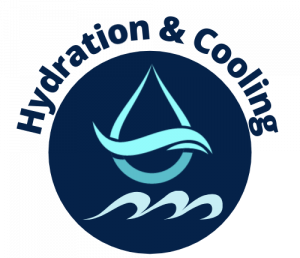Meta Description: This guide explores how proper hydration equipment can significantly reduce heat-related illness risks in athletes, covering essential technologies, implementation strategies, and emergency preparedness.
_______________________________
Preventing Heat-Related Illness in Athletes: The Hydration Equipment Guide
Heat-related illnesses represent one of the most serious—yet preventable—threats to athlete safety. Every year, thousands of athletes from youth to professional levels suffer from heat exhaustion and heat stroke, with some cases proving fatal. The tragedy lies in how preventable these incidents are with proper hydration equipment and protocols.
For athletic directors, coaches, and equipment managers, implementing effective hydration systems isn’t just about performance enhancement—it’s about creating fundamental safety infrastructure. This guide explores the critical connection between hydration equipment and heat illness prevention, providing practical recommendations for creating safer athletic environments. By understanding the nuances of hydration strategies, athletic programs can reduce the risk of heat-related illnesses that often plague athletes during intense training and competitions. This sports hydration systems overview offers insights into the latest technologies and practices, equipping staff with the knowledge to implement these crucial safety measures effectively. Ultimately, prioritizing hydration not only enhances performance but also fosters a culture of health and longevity in sports.
Understanding the progression from mild dehydration to potentially life-threatening heat stroke is essential for anyone responsible for athlete safety. With the right equipment and protocols, this progression can be interrupted before reaching dangerous levels.
The Science of Heat Illness and Hydration
When athletes exercise, especially in hot conditions, their bodies generate significant heat that must be dissipated. The primary mechanism for this cooling is sweat evaporation, which requires adequate body water reserves. As dehydration progresses, the body’s ability to cool itself diminishes, creating a dangerous cycle:
- Mild Dehydration (1-2% body weight loss): Decreased performance, increased perceived exertion
- Moderate Dehydration (3-5%): Significant performance decline, early heat illness symptoms
- Severe Dehydration (>5%): Risk of heat exhaustion and heat stroke dramatically increases
Proper hydration equipment creates the infrastructure necessary to interrupt this progression, keeping athletes in the safe hydration zone even during intense practice sessions in challenging conditions.
Essential Hydration Equipment for Heat Safety
Primary Hydration Systems
The foundation of heat illness prevention lies in reliable, accessible water delivery systems:
- Mobile Hydration Carts: 20-55 gallon carts provide sufficient capacity for extended practices and allow strategic placement around practice areas. Look for models with multiple dispensing points to eliminate waiting times during hydration breaks.
- Satellite Hydration Stations: Smaller 5-10 gallon stations positioned throughout practice facilities reduce the distance athletes must travel for hydration, increasing compliance with hydration protocols.
- Individual Bottle Systems: Personalized bottles with carriers allow continuous access and individual monitoring of fluid consumption while reducing cross-contamination risks.
Programs with the lowest heat illness rates typically implement layered approaches, combining team hydration stations with individual bottle systems for comprehensive coverage.
Cooling Technology Integration
Advanced programs pair hydration systems with cooling technologies:
- Misting Systems: High-pressure misting fans create cooling zones that can reduce ambient temperatures by 10-30°F, providing immediate relief during hydration breaks.
- Portable Shade Structures: Creating shaded rest areas with integrated hydration stations dramatically enhances cooling during breaks.
- Cold Immersion Tubs: The gold standard for treatment of heat-related emergencies, these should be readily accessible near practice facilities with adequate water supplies for filling.
Monitoring Equipment
Supplemental technologies that support hydration management:
- Digital Thermometers: Wet-bulb globe temperature (WBGT) monitoring provides objective data on environmental heat stress.
- Urine Color Charts: Simple visual aids helping athletes self-monitor hydration status.
- Digital Scales: Enabling precise tracking of body weight changes to quantify fluid losses.
Implementation Strategies for Maximum Safety
Calculating Adequate Equipment Levels
Equipment quantities should be based on team size and environmental factors:
- Minimum water availability: 16-20 oz per athlete per hour in moderate conditions
- Hot conditions (85°F+): Increase to 24-32 oz per athlete per hour
- Extreme conditions (95°F+): Consider 32-48 oz per athlete per hour plus supplemental cooling
For a 50-person team practicing for two hours in hot conditions, this translates to approximately 25 gallons minimum capacity, with distribution capabilities allowing all athletes to hydrate within a 3-5 minute break period.
Strategic Equipment Placement
Proper positioning of hydration equipment significantly impacts effectiveness:
- Position primary stations to minimize walking distance during scheduled breaks
- Create dedicated “cooling zones” combining shade, misting systems, and hydration access
- For multi-field practices, implement mobile solutions that can follow team movements
- Consider separate stations for different position groups with varying hydration needs
Emergency Preparedness Integration
Hydration systems should be integrated with emergency response plans:
- Cold-water immersion tubs positioned near primary practice areas
- Emergency water reserves separate from regular hydration supplies
- Clear signage identifying hydration and cooling station locations
- Backup power solutions for electric misting or cooling systems
Protect Your Athletes with Professional-Grade Hydration Solutions
At Hydration & Cooling Sports Equipment, we specialize in comprehensive heat safety systems that integrate hydration, cooling, and monitoring technologies. Our solutions are used by athletic programs nationwide to create safer training environments. With our advanced systems, organizations can implement effective heat safety protocols for athletes, ensuring they remain hydrated and cool during intense activities. Our innovative approach not only enhances performance but also significantly reduces the risk of heat-related illnesses. By prioritizing athlete well-being, we empower coaches and trainers to focus on developing talent while safeguarding their health.
Contact our heat safety specialists for a customized assessment of your program’s needs.
